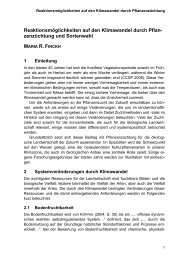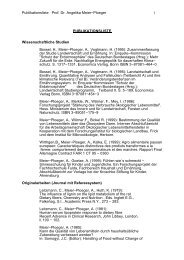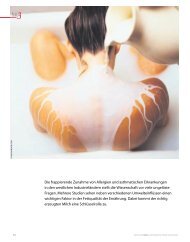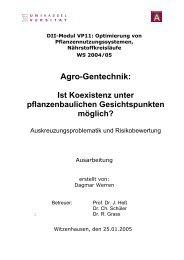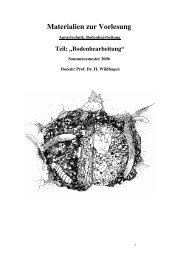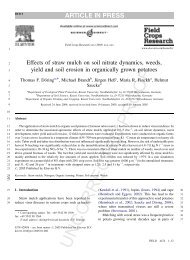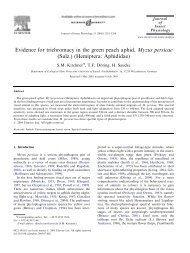You also want an ePaper? Increase the reach of your titles
YUMPU automatically turns print PDFs into web optimized ePapers that Google loves.
Endendijk and Dekker, has an additional consideration for the intrinsic characteristics of the<br />
cow as a criterion of integrity. He allows the animal itself, as it were, to indicate the limits<br />
which should be observed in <strong>breeding</strong> in order to evaluate the cow as a cow. Bakels shows in<br />
his ‘nature-like <strong>breeding</strong> method’ how the domestication process has proceeded from<br />
prehistoric cattle to our domesticated cow. From this domestication process he traces all kinds<br />
of functional characteristics which are now a proper part of the cow. The following<br />
characteristics should be considered in the <strong>breeding</strong> process of dairy cows (Postler, 1990;<br />
1991):<br />
• sexual dimorphism: bulls should be male-like in their expression and body figures and kept<br />
for meat production, whereas cows should be feminine and kept for milk production<br />
• cows are long distance walkers<br />
• cows are ruminants (compare Schad, 1971 and Spengler, 1997)<br />
• cows have a functional build (pelvic shape, flexible back)<br />
• physiological traits which are sex-linked.<br />
With this system Bakels developed practical and practicable <strong>breeding</strong> and selection<br />
characteristics which leave the domesticated animal as ‘whole’ as possible, and which are in<br />
keeping with the ‘nature’ and behavioural preferences of the animal (Haiger et al., 1988;<br />
Haiger, 1991).<br />
Schad (1971) focuses on animal <strong>breeding</strong> out of an integrity approach, when he chooses<br />
another entry point to identify the typical characteristics of the ‘cow being’. Based on the<br />
morphology and build of the animal species, its behavioural traits, and vital functions Schad<br />
classifies mammals into three main groups: rodents, predators and ungulates (compare<br />
Spengler in 3.1). Schad states that this trinity is a reflection of the threefold structure of man’s<br />
spirit: thinking, feeling and willing (see also Table 2.1). Baars E. and Nierop (in prep.)<br />
prepared a statistical analysis of these morphological principles. They showed, that the basics<br />
of these three main mammal groups were found in e.g. morphology, growth rate, teeth and<br />
birth. All the different types of animals show a certain bias. By becoming aware of these<br />
biases, we can ask ourselves what function each animal will serve for nature, agriculture and<br />
man. According to these correlations, Schad’s work illustrated that a cow, for instance, is in<br />
the first instance the perfect example of a roughage converter because of her special anatomy<br />
and physiology. The animal metabolises and transforms plant substances into milk, meat and<br />
manure, heat, work etc.<br />
Such an elaboration makes one aware of the typical characteristics of, say, cows. Just as<br />
Bakels’ approach, Schad’s can clarify what kind of being we are dealing with. Human action<br />
could now be aimed at housing and feeding all domesticated animals in accordance with their<br />
nature. Breeding and selection must allow the essential characteristics of each domesticated<br />
animal to come into their own. Bartussek (1991) indicated gradations of ‘naturalness’ in the<br />
agricultural production system. For this purpose he designed an ‘animal need index’ for<br />
feeding, welfare and <strong>breeding</strong>. Criteria for the index are drawn from animal-specific needs<br />
and can be seen as an expression of the integrity approach. Rist (1987) also started from the<br />
level of animal-specific needs with regard to animal welfare and housing. Rist pointed out<br />
that the psyche and its expressions, both in terms of well being and suffering, are examples of<br />
immanent forces. Herein lies the problem with the positivistic scientist, whose numerically<br />
based approach overlooks this immaterial level (see also Rist et al., 2000).<br />
9



